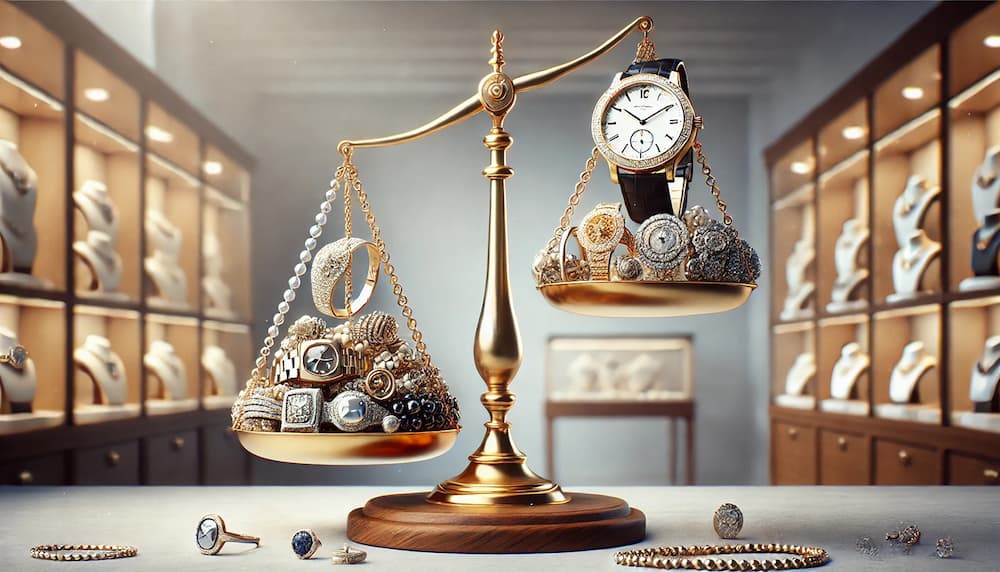Diversify, Diversify, Diversify – Chapter 1
by Abe Sherman – CEO, BIG – Buyers Intelligence Group
January 28, 2025
Too many retailers rely on too few brands to support their businesses. Losing one or two key brands can spell serious financial trouble for those retailers, who would benefit from diversifying by growing other areas of their business. The motivation for this conversation was prompted by an article about Trieber & Staub, a venerable free-standing jeweler in the suburbs of Milwaukee, WI, who closed after nearly 45 years in business after losing two brands. Unfortunately, according to this article, those two brands, Cartier and Rolex, accounted for 60% of their total sales.
It should come as no surprise to you that some important high-end brands are closing doors at an accelerated pace. While there is apparently little we can do to slow that pace, there is quite a lot we can do to offset the results of parting ways with these brands.
We work with many other jewelers who have lost Rolex and other brands, but were able to rebound by replacing the sales (and more importantly, profits) from the brands they lost. First, they had to determine the best course (or courses) of action by focusing their businesses in only one or two areas, usually bridal and diamond fashion. Next, they had to make certain bets on which brands to go after given their marketplace, competition and customer base. However, just wanting to bring in a new brand doesn’t guarantee they are available in your market.
When your top performing brands represent 30% of your business or more, you are at risk for a shock to your business if one or two of those brands exit your stores. It’s incumbent upon you to diversify your offerings, not by cutting back on those top performing brands, but by putting considerably more attention into other areas. Preferably, doing so long before the brands that have the most impact on your revenue surprise you by exiting. We are more interested in replacing the gross profit dollars these top brands represent, instead of trying to replace the sales. Watch brands in particular have lower gross profit than other categories, so the top-line sales isn’t as important as the contributions they make to gross profit.
In fact, when walking a retailer through Balance to Buy for the first time, we remove the top one or two brands from our analysis to better understand the impact those brands have on the business. This exercise is often met with surprise (or consternation) as to why we do that. The reason is simple. BrandX (you fill in the blank for your own business) has a significant impact on top-line sales, gross profit dollars, GP%, turn, GMROI, average ticket – basically all of your KPI’s, and the business looks vastly different when BrandX is removed from your numbers. While it’s often surprising to see what happens to your business when BrandX (and, or BrandY) is removed, this exercise sets the stage for opening the owner’s eyes to the vulnerabilities of being over-reliant on one or two brands.
It should be apparent by now that retailers have little control over these relationships, the power in most cases lies with the brands. The best way to alleviate the stress of waiting for that phone call or letter from the brand, whether it’s about severing the relationship or demands to do more (buy more, sell more) is to have options. Begin by removing the sales and gross profit generated by these brands and reanalyze your business – how will your P&L look? If it’s not very healthy, now is the time to start planning. For multi-store operations, the exercise should be done for each location as well since some brands will decrease the number of doors they’re in but not close the account completely.
No Free Lunch
The job of owners or merchandisers is to determine the direction to move into regardless of whether the major brands stay or go. Having too many eggs in too few baskets is risky whether you are talking about jewelry stores or investment portfolios. If you learn anything about investing over long periods (decades), it’s that you don’t put all of your money into one or two assets. Well, isn’t your jewelry store similar to any other investment portfolio? A basket of non-correlated assets, each of which may advance or decline at different times, significantly increases your success rate. And as is frequently quoted when it comes to building those investment portfolios, Diversify, Diversify, Diversify!
Parting Advice from Ray Dalio
What’s true in investing is also true when merchandising a jewelry store.






